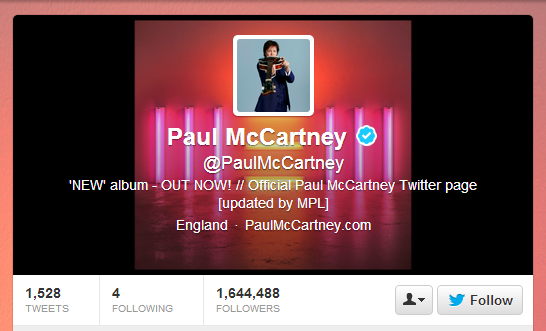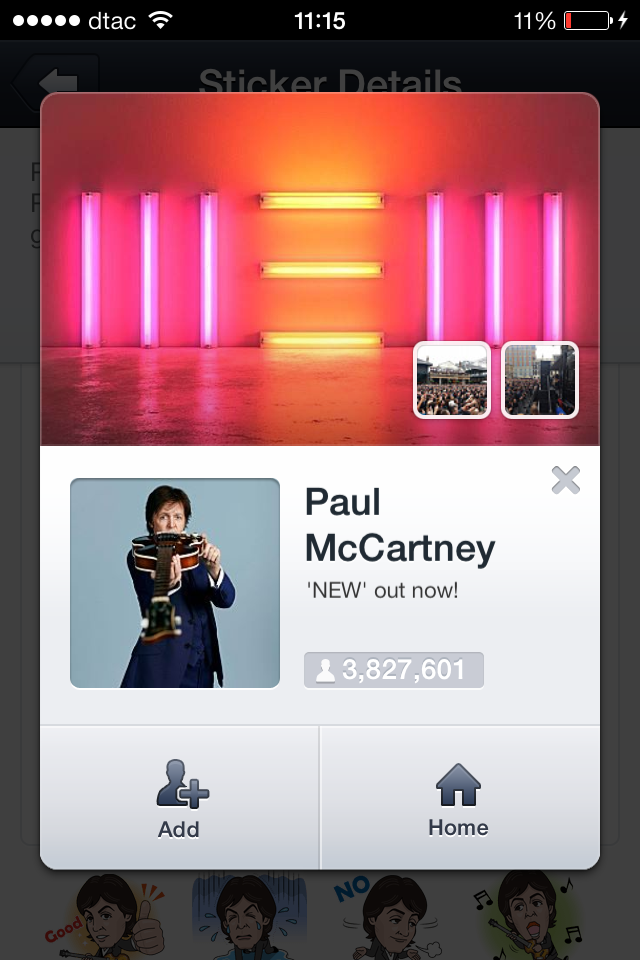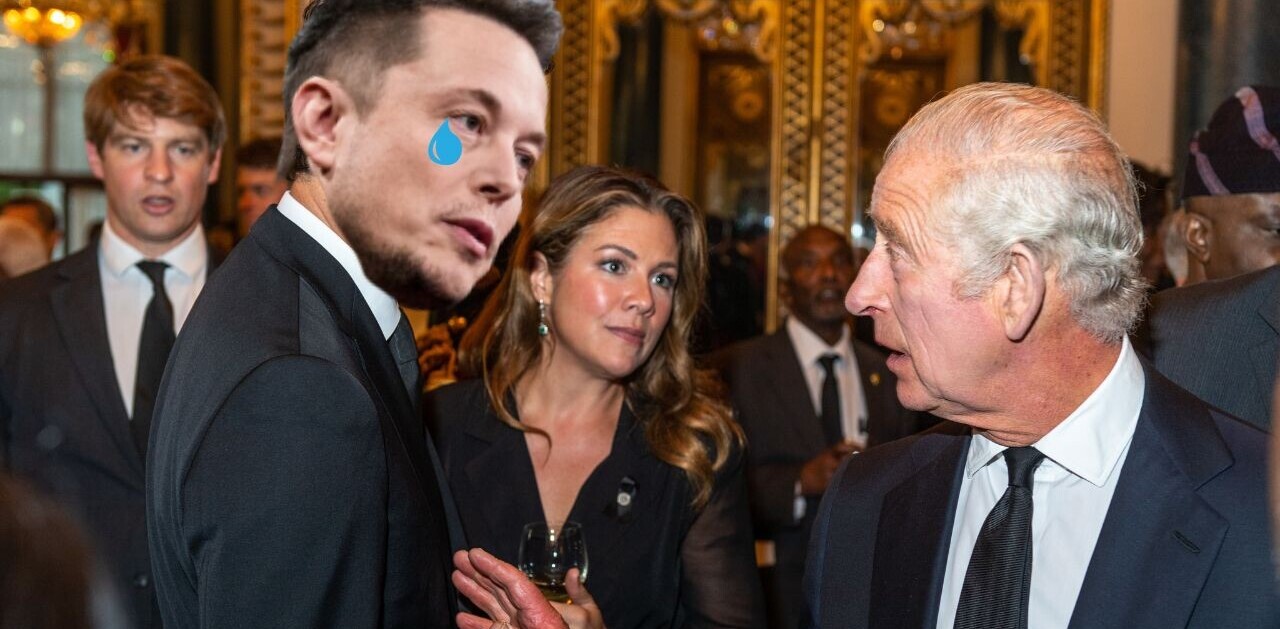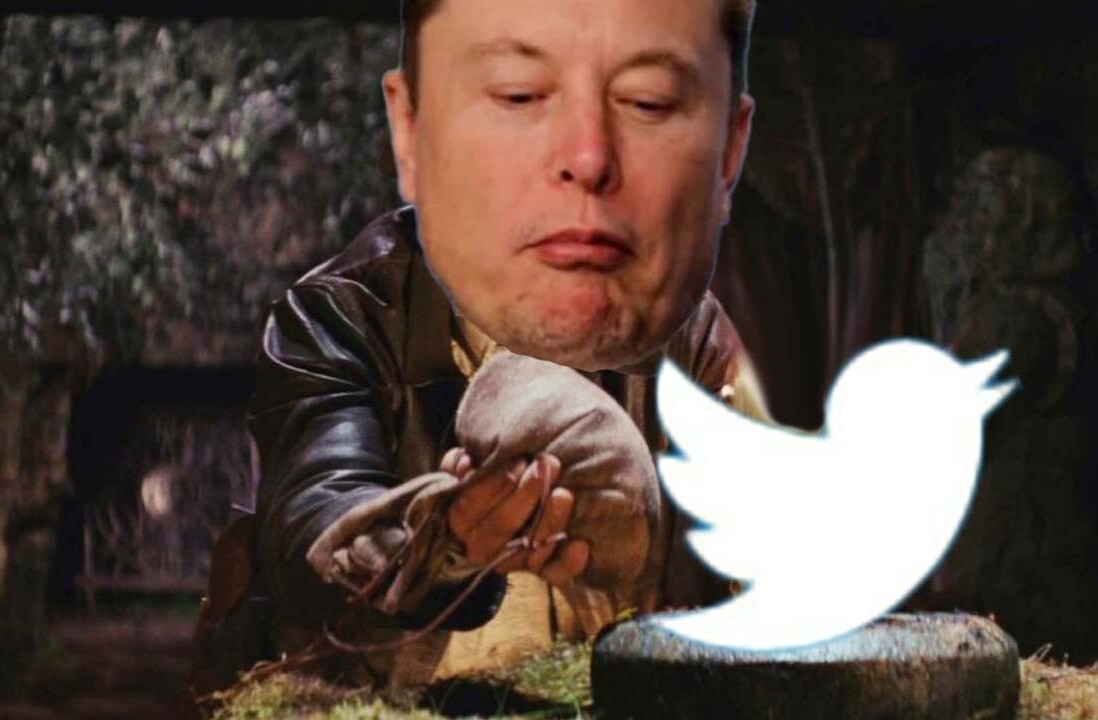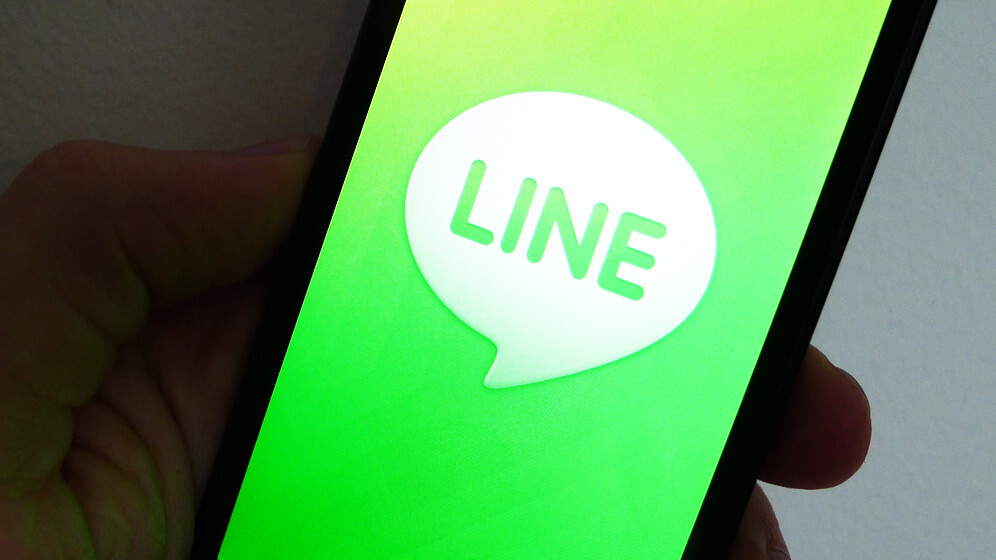
If you read Twitter’s S-1 filing, or the resulting media reports, then you’ll be aware that the company highlighted a few Asian messaging firms that it sees as potential threats.
It might not make immediate sense why, since Twitter is a micoblogging service not a messenger (yet!). The answer isn’t about competing for users, per se, but instead competing for advertising spend, which Twitter relies on for its revenue.
Here’s an example from Line, a messaging app with 280 million registered users.
This is Paul McCartney’s official account on Twitter — 1.6 million followers:
This is Paul McCartney’s official account on Line, which is just two weeks old — 3.8 million followers:
As you can see McCartney has more than twice as many followers on Line than on Twitter.
What’s really interesting here is that Twitter ran a Q&A with the former Beatles singer earlier this month which highlights him as an example of how musicians can tap into the service for future releases and more.
Yet Line has courted him, and now he has the potential to not only reach a larger audience, but get more engagement. Users of Line are more likely to see his content since they receive it directly on their phone — like an SMS — unlike on Twitter where it may get lost in a sea of other tweets.
McCartney’s team even promoted the Line account on Twitter:
ついにポール・マッカートニーの無料スタンプがLINEに登場!今すぐポールのLINE「友だち」になってダウンロードしよう!スタンプ配布は11月25日(月)まで pic.twitter.com/eIu5DAgLlm
— Paul McCartney : 日本 (@PaulMcCartneyJp) October 29, 2013
In actual fact, these stickers are a pretty crucial part of the Line ‘growth strategy,’ since they are only available to Line users who opt in to following him. That helps explain some of the crazy growth in the past two weeks.
The end result is a win for all parties. McCartney gets a direct channel to fans, fans get his stickers and news updates, and Line makes money in two ways: letting McCartney have stickers and also giving him an ‘official account’ through which to reach his fans. (Read more about its business model here.)
As for Twitter: it isn’t yet clear just how much ad spend Line is snatching from it, but since the messaging company has plans to expand into Europe, the US, Latin America and more, the threat is growing, as the example of McCartney illustrates.
Here’s a quick comparison. Twitter brought in $168.6 million during its last quarter (up from $82.3 million a year ago); Line made $132 million from its last quarter, a 45 percent increase on the previous quarter.
Line’s business is more varied than simply promoted accounts and stickers, but it’s no wonder there’s a strong case for a standalone Twitter Direct Message app.
Related: How can a mobile messaging service be worth $28 billion?
Hat tip Musically / Stuart Dredge
Get the TNW newsletter
Get the most important tech news in your inbox each week.
